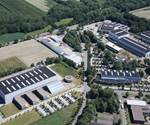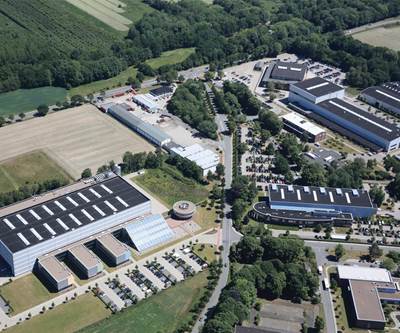CTC’s CEO on digital manufacturing for composites
The Composite Technology Center (Stade, Germany) advances composites production and sustainability through Industry 4.0 working groups.
Prof. Dr. Axel Herrmann is not only the CEO of the Composite Technology Center (CTC) in Stade, the heart of Germany’s carbon fiber composites CFK Valley, he is also CTO of the CFK Valley e.V. trade association, director of the Faserinstitut Bremen (FIBRE) and part of the team behind the ECOMAT materials technology development lab, also located in Bremen, Germany. Herrmann has helped to create a unique entity in the CTC, one where aerospace and nonaerospace applications benefit from continued innovations in composites. His continued vision for CTC provides leadership for its mix of talented engineers and technicians to push composites innovations in design, material development and reuse, processes, assembly, recycling and digital manufacturing. Speaking of where CTC’s efforts are headed currently, Herrmann notes, “Composites can no longer compete only on performance. They must also offer superior production and sustainability.”
“When we founded the CTC in 2001,” Herrmann continues, “our vision was to achieve more optimization in composites manufacturing. We have done this, installing flowlines like in the automotive industry and various types of automation. Now, we look to the next step, to regulate the process.” Herrmann notes that, today the process is only steered, “we don’t have complete control.” He explains that to achieve full control, “we need to measure a lot of parameters and then give this data to predictive controlling systems. These systems alert that you have a deviation in the part production process and you may be able to alter a later process step to reduce this deviation, rather than having to repair or discard the part. We then can go back into the process where the part deviation occurred and change the parameters to prevent this error in the future. Thus, at the end of production, we get only quality parts.”
Herrmann relates that he completed an analysis of the RTM process and identified more than 200 parameters. “We need to measure and control all of these parameters,” he says, “and we must also understand possible interactions and the resulting impacts. We need to learn so much more about how to collect and use this data in order to achieve predictive control.”
However, some of this education can be achieved through computer simulation and modeling. “We need to simulate all of our processes,” Hermann asserts. “In the past, we didn’t do this as much. But now we need to learn how to measure all of the process parameters and understand the interactions, so the modeling is necessary. We have a lot of work to do.”
The work Herrmann outlines is quite large in scope. Is there an overall plan for this within the CFK Valley organization? “We have decided on a working group,” Hermann responds, “and we are working to develop a plan with milestones.” He notes that the CFK Valley trade association was founded in 2004 because “it was not possible for just one company to do all of the development needed.” Hermann says now there are multiple working groups; for example, one to do simulation, one to do measurements. “The first step is to agree on a standardized definition of what Industry 4.0 is for composites,” he explains. “Then, we will set our initial goals and milestones.”
See also "Composites Technology Center and Plataine partner to create "Factory of the Future".
Related Content
Plant tour: Spirit AeroSystems, Belfast, Northern Ireland, U.K.
Purpose-built facility employs resin transfer infusion (RTI) and assembly technology to manufacture today’s composite A220 wings, and prepares for future new programs and production ramp-ups.
Read MoreManufacturing the MFFD thermoplastic composite fuselage
Demonstrator’s upper, lower shells and assembly prove materials and new processes for lighter, cheaper and more sustainable high-rate future aircraft.
Read MoreA new era for ceramic matrix composites
CMC is expanding, with new fiber production in Europe, faster processes and higher temperature materials enabling applications for industry, hypersonics and New Space.
Read MoreInfinite Composites: Type V tanks for space, hydrogen, automotive and more
After a decade of proving its linerless, weight-saving composite tanks with NASA and more than 30 aerospace companies, this CryoSphere pioneer is scaling for growth in commercial space and sustainable transportation on Earth.
Read MoreRead Next
CW Plant Tour: Composite Technology Center, Stade, Germany
A cornerstone of Germany’s CFK Valley, CTC pushes composites forward via automation, recycling, digital thread-based manufacturing and more.
Read MoreVIDEO: High-volume processing for fiberglass components
Cannon Ergos, a company specializing in high-ton presses and equipment for composites fabrication and plastics processing, displayed automotive and industrial components at CAMX 2024.
Read MoreAll-recycled, needle-punched nonwoven CFRP slashes carbon footprint of Formula 2 seat
Dallara and Tenowo collaborate to produce a race-ready Formula 2 seat using recycled carbon fiber, reducing CO2 emissions by 97.5% compared to virgin materials.
Read More















.jpg;maxWidth=300;quality=90)







